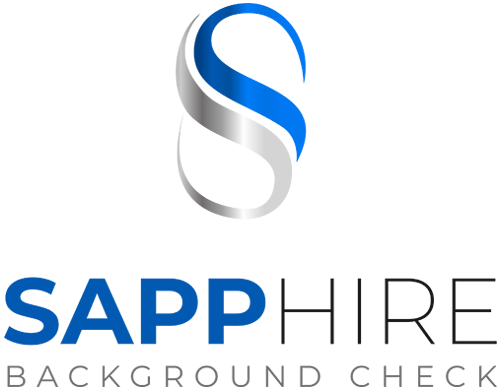What Is National Public Data? Background Check Explained
- August 20, 2025
- Posted by: SappHire Check
- Category: background check tips

What is national public data often comes up in hiring, tenant screening, and news about a large data breach. In short, the phrase points to national-scale pools of identity and historical records used to verify people during background checks.
This guide explains how those datasets are built from public data and non-public sources, what a “national public data breach” means for applicants and employers, and how to protect both personal information and screening workflows with clear, practical steps.
What is National Public Data
In background checks, national public data refers to wide collections of identity, contact, and court records stitched together for fast search and matching. These collections help screeners confirm identity, link history across jurisdictions, and find criminal records tied to the right person before a report is issued.
The inputs can include full names, social security numbers, addresses, past addresses, phone numbers, dates of birth, and court data. Because many feeds are aggregated, content can be inconsistent or outdated, which is why reputable providers re-check at the source. The same scale that speeds hiring also raises risk if the pool is breached and exposed by a threat actor.
Public Data
Public data includes court calendars, recorded judgments, professional licenses, property filings, and other government sources at the local, state, and federal levels. These are used to locate the right courts and confirm whether a charge or conviction is reportable under law and policy.
Public sources alone rarely cover everything a screener needs. Providers also use non-public sources such as commercial identity files, utility headers, or partner feeds to link a person across databases. When used properly, these links reduce misses. If compromised data leaks from any source, the same linkage can help identity thieves build stronger profiles.
National Public Data
People use “national public data” as a shorthand for the kind of dataset that fuels many background checks. It does not point to one company or site. It describes a method: gather many inputs, normalize the fields, and make them searchable so reports can be produced quickly and consistently.
For hiring teams, the value is coverage. A single query can point to a court in another state or flag a mismatch in past names or addresses. For applicants, the value is accuracy and speed when sources are current and checks are done well. The drawback is that large holdings of sensitive data attract attackers.
National Public Data Breach
A significant data breach with this label means a large identity dataset used in screening was taken without permission and shared or sold. Reports have covered leaked data on forums linked to the dark web, stolen data moved between sellers, and lawsuits filed by those who were affected. News also cited exposed archives and weak passwords on a related website that increased access risk.
For background-check buyers and applicants, the impact is twofold. Individuals face identity theft attempts and new account fraud. Employers may see screening delays while providers confirm data lineage, purge compromised data, and adjust feeds. When millions of people are involved, even small error rates create noise in both directions.
Data Breach
Large data breaches in identity pools raise fraud pressure for months: attackers test small charges, try account takeovers, and open new accounts, while older history fields can still pass weak knowledge checks. The best response is fast detection and minimal exposure pause risky data flows, add extra validation, re-check sources, and re-screen sensitive roles. Employers should keep a simple change log noting which feeds were used, when they were paused, and when each change was reviewed by legal or security.
According to the U.S. Federal Trade Commission, when a data breach occurs organizations should quickly secure systems, investigate what was accessed, and notify affected people, while individuals should monitor bank and card statements and credit reports and consider a fraud alert or credit freeze to help block new accounts steps that align with pausing risky data flows, re-checking sources, and documenting actions.
Identity Theft
Identity theft relies on the same data screening used to find the right person. With full names, social security numbers, addresses, past addresses, and phone numbers, a threat actor can attempt loans, cards, or tax filings in your name. Some will swap SIMs, intercept codes, or call pretending to be your bank.
Watching for suspicious activity pays off. Set alerts, review credit card statements, and check financial accounts every week for small tests that grow later. If you find open accounts you did not start, call the lender and move to the controls in the fraud alert section below.
NPD Breach
You may see “NPD breach” used as shorthand across articles, forums, and notices. Treat it as a label for a broker-scale leak rather than a single product or brand guide. The steps below work no matter which broker or reseller appears in headlines, whether in the U.S. or Canada.
For hiring teams:
- Assume shared risk across the screening supply chain.
- Ask your provider if any feed linked to “NPD” was used.
- Request details on purge actions and re-verification steps taken.
- Keep documentation so you can show auditors what changed and when.
Personal Information
For readers, the core concern is personal information. The mix below is what screening often uses and what criminals also want. One source does not make a complete profile, but combinations reduce friction for fraud.
| Data element | Why screeners use it | Risk if leaked |
|---|---|---|
| Full names, DOB, social security numbers | Confirms identity; drives accurate court pulls | Identity theft, tax refund fraud, and new accounts scams |
| Addresses, past addresses, phone numbers | Finds jurisdictions; supports notices and applicant contact | Phishing, SIM swap, targeted phone calls |
| Court results (criminal records) | FCRA-reportable findings | Doxxing, harassment if misused |
Keep storage tight on your side, too. If you collect applicant data on your website, use HTTPS, reduce fields, and restrict access by role. Rotate credentials and enforce strong passwords for internal users to keep your systems secure.
Fraud Alert
A fraud alert tells lenders to verify identity before approving credit. Start with an alert if a pull on your credit file or a card charge looks wrong. If attempts continue or you find open accounts, add a freeze at all three major credit bureaus and turn on credit monitoring with near real-time notices.
Use two layers to cut takeover risk. Turn on two-factor authentication for email, payroll, and finance; change passwords and stop reusing them across sites. Review credit reports and financial accounts weekly for changes. If callers ask for one-time codes, hang up and call the number on the back of your card.
Fast actions checklist:
- Place a fraud alert; consider a freeze if activity continues
- Enable two-factor authentication and update passwords
- Turn on credit monitoring; scan credit reports weekly
National Public
You may see “national public” used loosely in headlines and notices. Read it as a general pointer to data gathered at the national scale. In practice, this points back to supplier controls: how identity is linked, which sources are used, and how the feed is audited.
For background-check buyers, ask vendors to put lineage in writing. You want to know which databases and federal or state sources are used, how matches are made, how often records are refreshed, and what changes were made after any data breach. Require named contacts who can answer quickly when issues arise.
How to Check if You Were Affected
Start with a trusted breach-lookup website that asks only for an email or phone. Save a screenshot with the date and result. Do not upload ID scans to a random site. If a lookup hints at ties to a national public data breach, move to credit controls the same day.
Next, review your credit reports, set spending alerts in bank and card apps, and scan credit card statements line by line. If you spot suspicious activity, contact the institution, dispute the item, and keep a short log of the call or chat, including reference numbers and dates.
Operational Safeguards for Employers
Keep hiring steady while improving data quality. Ask your screening provider to confirm whether any “national public” feed was used and whether changes were filed with regulators or clients. Request purge proofs and a re-check plan for sensitive roles.
Harden your side at the same time. Reduce standing access, rotate admin keys and passwords, and monitor for unusual exports or search spikes. Limit who can view raw identifiers. If a feed was risky, add a short-term re-verification step for roles with privileged system access.
Conclusion
If you came here asking what is national public data, think of it as national-scale identity, employment history, and court records used in background checks. These datasets speed hiring and improve coverage, yet the same scale increases security risk when a data breach occurs. Individuals should watch their credit and financial accounts, use two-factor authentication, and act fast on suspicious activity. Employers should confirm source lineage, re-verify employment for sensitive roles when needed, monitor vendor changes, limit access, and keep a clear log of decisions.
At Sapphire Check, we can review your screening process and strengthen your data sources without slowing hiring. We make sure your process follows policy and law. Contact us to learn more.
FAQs
What is national public data?
A national-scale pool of identity and history records used in background checks, built from public data and non-public sources to match the right person and pull accurate criminal records.
What is the national public data breach?
A large data breach where a screening dataset was taken and shared as leaked data or stolen data, increasing fraud pressure on those affected and driving extra validation for employers.
How do I know if I’m in the breached records?
Use a trusted lookup website, then review credit reports, enable credit monitoring, and set alerts on financial accounts. If you see attempts or open accounts, place a fraud alert and consider a freeze.
What should employers do after an NPD breach headline?
Ask providers for written data lineage, purge status, and re-verification steps. Tighten access, rotate passwords, and monitor identity stores. Keep artifacts to show what changed and when.
